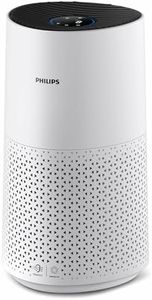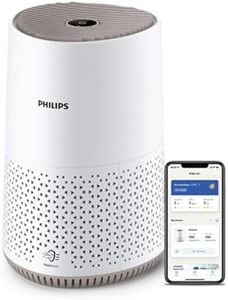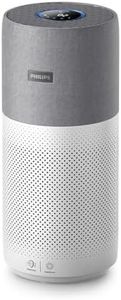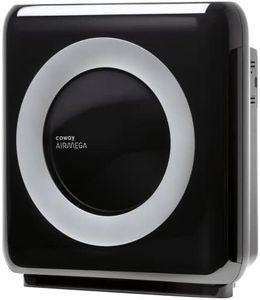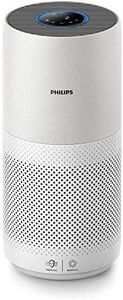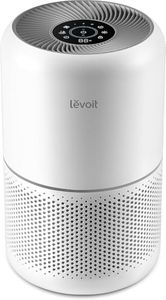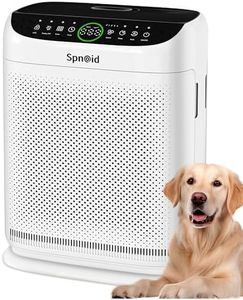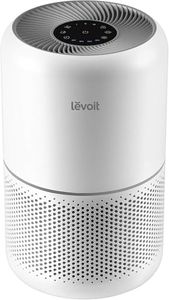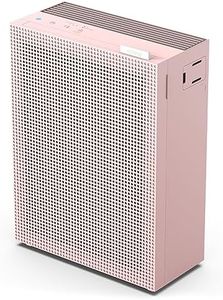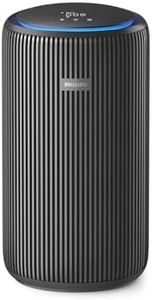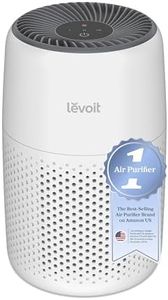We Use CookiesWe use cookies to enhance the security, performance,
functionality and for analytical and promotional activities. By continuing to browse this site you
are agreeing to our privacy policy
10 Best Air Purifier For Baby Rooms
From leading brands and best sellers available on the web.Buying Guide for the Best Air Purifier For Baby Rooms
Choosing the right air purifier for a baby's room is important to help create a safer and healthier environment, especially since babies are more sensitive to airborne particles. It's important to focus on features that will effectively clean the air while being safe and quiet enough not to disturb sleep. Understanding the main specifications can help you make a confident and informed decision for your baby's needs.Filtration TypeFiltration type refers to the kind of filter the air purifier uses to trap particles. The most common is a HEPA filter, which is highly effective at capturing small particles such as pollen, dust, pet dander, and even some bacteria. For baby rooms, a true HEPA filter is often recommended because it can capture particles as small as 0.3 microns with high efficiency. Some purifiers also use activated carbon filters to remove odors and gases. When choosing, look for HEPA filters for particle removal, and consider additional carbon filtration if odors or chemical sensitivities are a concern for your family.
Room Coverage (CADR/Recommended Room Size)This spec tells you what size of room the air purifier can handle effectively. The Clean Air Delivery Rate (CADR) measures how fast a purifier can clean the air within a specific room size. Manufacturers also typically list a recommended room size. For a baby’s room, check the square footage and ensure the purifier’s coverage matches or exceeds the room’s size. For smaller rooms, most purifiers will suffice, but don’t pick a device that’s too large or too small – the former is inefficient, and the latter won’t clean the air effectively.
Noise LevelNoise level, usually rated in decibels (dB), indicates how loud the air purifier will be while operating. Since baby rooms should stay quiet to encourage sleep, a lower noise level is preferable, especially for nighttime use. Many purifiers have multiple speed settings; lower settings tend to be quieter. Consider models that specify a low decibel rating (below 30-40 dB) on their lowest setting for the best sleep environment.
Safety FeaturesSafety features are important when placing any device in a baby’s room. Look for purifiers with child safety locks, no exposed sharp edges or hot surfaces, and those certified for safe electrical operation. Some units also have features like filter change indicators to maintain performance and air quality. If you want to avoid potential ozone or other byproducts, choose a purifier without ionizers or UV-C lights, unless the product states it is ozone-free or uses protection against such emissions.
Filter Replacement and MaintenanceAir purifiers require regular filter changes to remain effective. The ease and frequency of filter replacement can impact ongoing use. Before buying, check how often the filters need changing and whether replacements are easy to find and install. Some models have filter indicators, which let you know when a change is due. Choose a purifier with accessible filters and clear replacement instructions to ensure you can keep the air clean for your baby with minimal hassle.
Extra FeaturesMany air purifiers offer additional features such as night lights, timers, air quality sensors, or app connectivity. For a baby’s room, features like a soft night light or automatic shut-off can be beneficial, while others may not be necessary. Decide which extra features will actually improve the experience for you and your baby, and don’t let less relevant features distract you from the core performance of the purifier.
